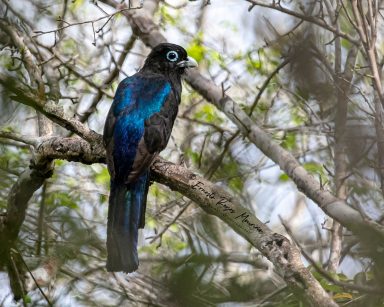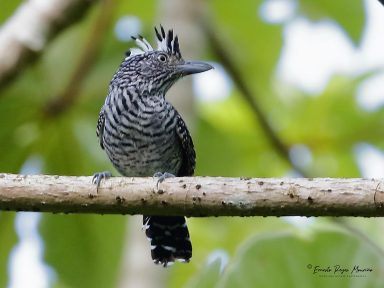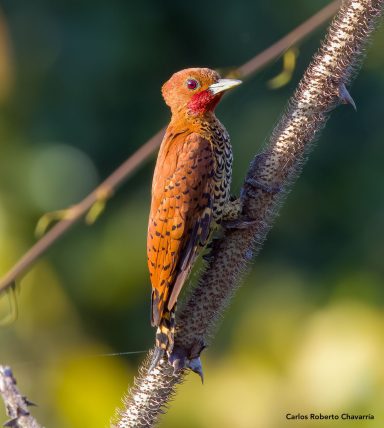
Day 1- Arrival to San Jose International Airport (SJO). Transfer to the Hotel, depending of the arrival time, birding at the Hotel gardens.Overnight at Bougainvillea Hotel. www.hb.co.cr (meals in your own)
Day 2. Breakfast.
Departure to start looking for amazing Hummingbirds of Costa Rica. Lunch in the area and visit “Donde Cope”, a good place for Hermits like the Green Hermit (Phaethornis guy), Bronze-tailed Plumeleteer (Chalybura urochrysia), Toucans, and other species. Overnigth in La Quinta de Sarapiquí.
(B, L, D)
Day 3. Early breakfast and departure to La Selva Biological Station, one of the premium hotspots in Costa Rica for birdwatching and wildlife viewing. More than 470 species of birds including the Tiny Hawk (Microspizias superciliosus), Great Green Macaw (Ara ambiguous), Rufous Motmot (Barypthengus martii), Blue-chested Hummingbird, Umbrella Bird (Cephalopterus glabricollis), Snowy Cotinga (Carpodestes nitidus), and the Ornate Hawk-Eagle (Spizaetus ornatus), as well other species for lowlands of the Caribbean side. Overnight at Sarapiqui. (B, L, D)
Day 4.Early departure to Virgen del Socorro. Birding on the road. Late breakfast at Cinchona. Coppery-headed Emerald (Microchera cupreiceps), Prong-billed Barbet (Semnornis frantzii), Red-headed Barbet (Eubucco bourcierii), Violet Sabrewing, and other species.
Continue to La Fortuna. Overnight at Hotel Kokoro.
Day 5. Departure to Caño Negro Wildlife Refuge.
Boat trip to the wonderful wetlands of Caño Negro the habitat of the Jabiru (Jabiru mycteria), Agami Heron (Agamia agami), and great diversity of Shorebirds and wetland species.
Overnight at Kokoro Hotel.
Day 6. Early birding at Bogarín Trail: Uniform Crake, Keel-bill Motmot (Electron carinatus), and White-throated Crake (Laterallus albigularis). Full day at Observatory Point for Great Curassow (Crax rubra), Crested Guan (Penelope purpurascens), Thicket Antpitta (Myrmothera dives). Afternoon birding at Arenal Lake area looking for the Rufous Motmot, Great Antshrike (Taraba mayor), Laughing Falcon (Herpetotheres cachinnans). Overnight at Kokoro Hotel.
Day 7 & 8. Early breakfast and departure to Central Pacific, where is located Carara National Park the largest transitional forest and one of the most important wildlife corridors in all of Central and South America. Carara is the home of the most successful Scarlet Macaw (Ara macaw) rehabilitation program in Costa Rica. Lunch at Tárcoles town, one of the best places to spot the endemic Mangrove Hummingbird (Amazilia boucardi).
Afternoon boat trip at Tárcoles river. Check-in at Hotel Villas Rio Mar.
Day 9. Early
birding at Barú National Wildlife Refuge on the way to Talamanca Highlands with an stop at Los Quetzales National Park for the Volcano Hummingbird (Selasphorus flammula), Volcano Junco (Junco vulcani), Peg-billed Finch (Acanthidops bairdi), Fiery-throated Hummingbird (Panterpe insignis), Talamanca Hummingbird (Eugenes spectabilis), Sooty Thrush (Turdus nigriescens), Long-tailed Silky Flycatcher (Ptiliogonys caudatus).
Check-in and overnight at Savegre Hotel or similar.
Day 10 & 11. Birding in San Gerardo de Dota. This region is home to almost 30 species near endemics of Costa Rica, among others: Spangle-cheeked Tanager (Tangara dowii), Slaty Flowerpiercer ,(Diglossa plumbea), Flame-colored Tanager (Piranga bidentate), and Flame-throated Warbler (Oreothlypis gutturalis).
Overnight at Savegre Lodge.
Day 12. An early visit to Batsú Garden. A garden designed specifically for birdwatching and photography. Feeders and fruits attract the birds to viewing platforms, while trails wind through the blooming gardens.
Departure to San José. Stop at Providencia Road for birding. Check in at Casa Cielo Hotel.
Farewell dinner.
Day 13. Breakfast at the hotel. Birding on grounds. Transfer to Airport.
COSTA RICA
13-days Tour
August 2-14 2024
Trip Leaders:
Carlos Chavarría Ernesto Reyes
Group Size
6-10 participants
Tour Cost
From $ 3 950
Cost is per person, double occupancy from San José
©Carlos Chavarria
Help us make a change
We need your consent to load the translations
We use a third-party service to translate the website content that may collect data about your activity. Please review the details in the privacy policy and accept the service to view the translations.





